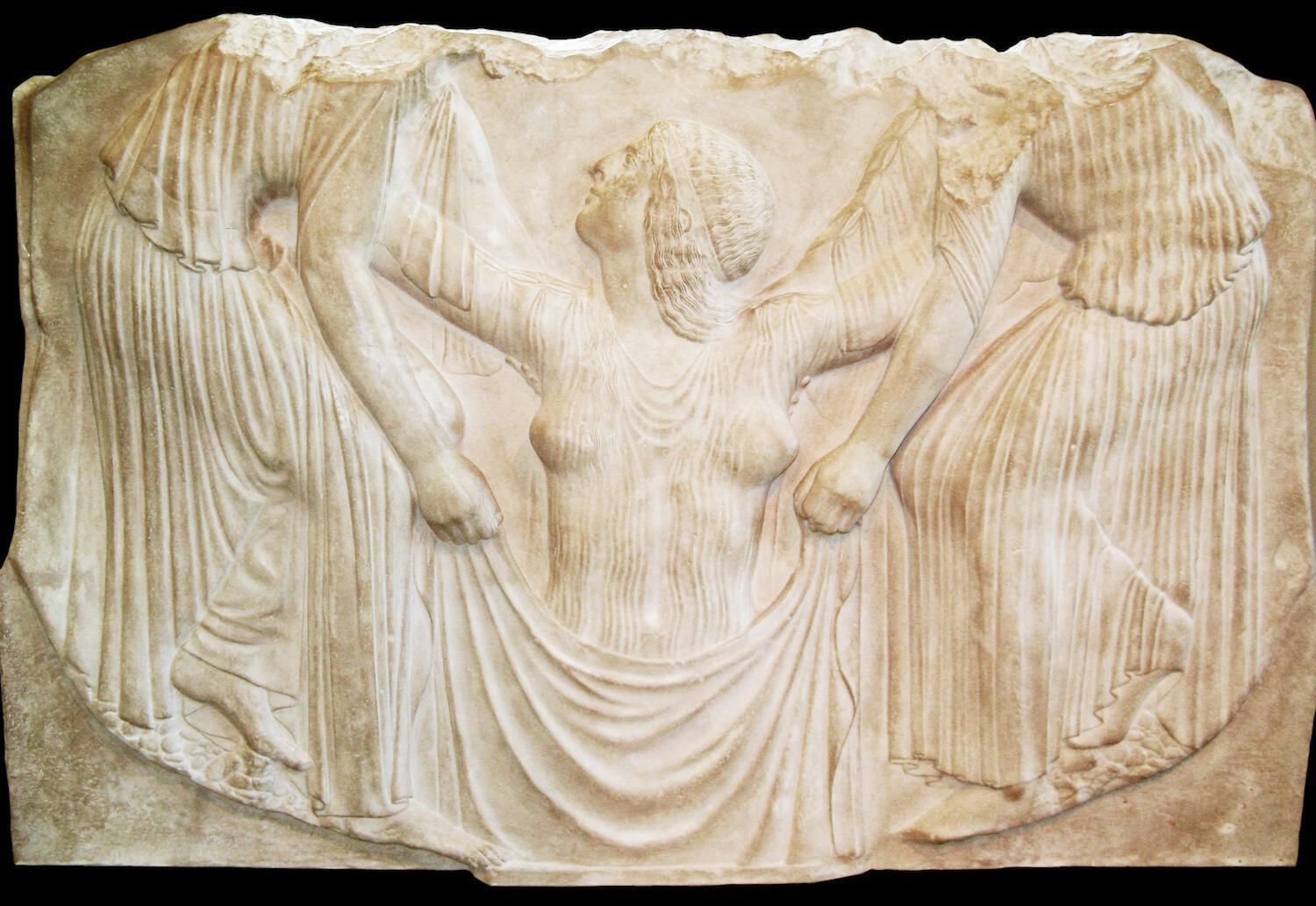Ludovisi Throne (Centre Panel) Birth of Aphrodite
Name/Title
Ludovisi Throne (Centre Panel) Birth of AphroditeEntry/Object ID
77G0317Description
Relief of central female figure depicted from waist up with a female attendant on either side in process of wrapping a cloth around her; pebbles below feet of female attendants. Damage to top of panel. See also Hetaera Panel and Woman Burning Incense Panel. Plaster replica of a marble original.Type of Sculpture
ReliefArtwork Details
Medium
MarbleSubject
Birth of AphroditeSubject Person
AphroditeContext
The Ludovisi Throne, which this panel is a part of, most likely originates from the sanctuary of Aphrodite in Lokri Epizefiri in southern Italy or the Sicilian sanctuary of Aphrodite in Erice. It was discovered in the gardens of the Villa Ludovisi in Rome in 1887, believed to be the location of the Gardens of Sallust in antiquity. The designation as a throne is a misnomer, as it was initially believed to be the seat of a cult statue, but most likely functioned as part of an altar. The main figure of this central panel is, according to some authors, Aphrodite (Venus) rising from the seafoam, which represents the scene of her birth. To others, however, the figure portrays Persephone on her annual return from the underworld. The two women helping her to rise from the sea, according to those who believe this is Aphrodite, are standing on pebbles, designating this a maritime scene. The partisans of Persephone respond that this is a dry land scene with a narrow pit from which no one else but Persephone could rise. The style of the figures and the detail of the drapery of their clothing places this sculpture on the cusp of the beginning of the Classical period of Greek art. The central figure of Aphrodite shows hints of growing realism. The dampness of her clothing as she rises from the sea shows a desire to reveal the nudity and beauty of the female form. To show female figures in nude or semi-nude was unprecedented at this time, perhaps indicating a shift in the artistic depiction of the female figure.Collection
Classical GreeceMade/Created
Date made
480 BCE - 460 BCETime Period
ClassicalPlace
Institution
LouvreCity
ParisCountry
FranceEthnography
Cultural Region
Region
Magna Graecia, SicilyCountry
ItalyCulture/Tribe
Greek - Classical

